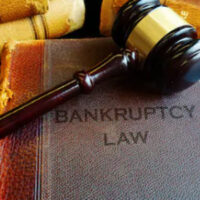How Does the “Undue Hardship” Requirement Apply to Student Loans in Bankruptcy?

If you have considered filing for bankruptcy in order to have your student loans discharged, you may know that you must be able to prove that continuing to pay your loans would impose an “undue hardship” on you. The US Bankruptcy Code says, in its “exceptions to discharge” section, that “unless excepting [educational debt] from discharge under this section would impose an undue hardship on the debtor and the debtor’s dependents,” then it cannot be discharged. Courts have interpreted the nature of “undue hardship” in different ways, and most courts rely on a test known as the Brunner test.
Before the end of 2022, when the US Department of Justice (DOJ) issued new guidance related to the discharge of student loans in bankruptcy cases, the process for meeting the undue hardship requirement was complicated and often time-consuming (although not impossible, as many bankruptcy myths suggest). However, at the end of 2022, the DOJ issued new guidance making it significantly easier for student loan borrowers to have their educational debt discharged through bankruptcy. Our West Palm Beach bankruptcy attorneys can explain.
DOJ Attorney Assessment of Undue Hardship
Prior to the new guidance, debtors who wanted to have student loans discharged needed to file an adversary proceeding that involved the presentation of various forms of evidence to show that continuing to pay their student loans would impose an undue hardship. The process was often long and complicated, and as a result, it could be expensive, as well.
Recognizing that the process should be streamlined and significantly easier, the DOJ issued new guidance that clarified debtors would still need to prove undue hardship, but they would do so in a much easier manner: by filing an adversary proceeding and submitting a completed “attestation form” for DOJ attorneys to review. Based on their review of the attestation form, DOJ attorneys assess whether continuing to pay student loans would impose an undue hardship on the debtor, and if so, make a recommendation to the bankruptcy court for a full or partial discharge of that debtor’s student loans.
Specific Undue Hardship Factors to Be Assessed
Based on the Brunner test and court considerations of what constitutes an undue hardship, in reviewing and assessing the attestation form information, DOJ attorneys look at three categories:
- Present ability to pay (including details about your present financial circumstances and ability to work);
- Future ability to pay (based on your health and ability to work, employment history, and related factors); and
- Good faith effort (considering your student loan payment history in the past and attempts to manage your student loans by seeking forbearances or income-driven payment options).
Contact a West Palm Beach Bankruptcy Lawyer Today
If you have any questions about how the new process works for discharging student loans in bankruptcy, or if you want to learn more about how the new process works, you should get in touch with one of the experienced West Palm Beach bankruptcy attorneys at Kelley, Fulton, Kaplan & Eller as soon as possible. We are assisting debtors with bankruptcy cases involving student loan discharges, and we can speak with you today about your options.
Sources:
justice.gov/d9/pages/attachments/2022/11/17/student_loan_discharge_guidance_-_fact_sheet_0.pdf
justice.gov/d9/pages/attachments/2022/11/17/student_loan_discharge_guidance_-_guidance_text_0.pdf
law.cornell.edu/uscode/text/11/523



